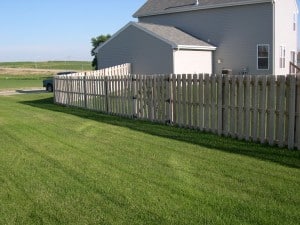
05 Aug Common Lawn Problems in Late Summer
 The University of Nebraska at Lincoln recently released its latest horticulture update. The following is taken directly from their release and details lawn problems that are currently occurring.
The University of Nebraska at Lincoln recently released its latest horticulture update. The following is taken directly from their release and details lawn problems that are currently occurring.
White grubs- Three-year (May/June beetles) and annual white grubs (masked chafers and Japanese beetles) damage is appearing. Damage initially appears as patches of discolored grass, similar to drought stress. On examination, turf will pull up like a rug and white grubs will be found beneath the sod. Damage thresholds are highly variable because precipitation or irrigation (more grubs can be tolerated with more moisture), species (tall fescue is more tolerant of feeding damage than Kentucky bluegrass), expectations, etc. Generally, preventative control control is warranted if the area has a history of damage or curatiove control if 5-8 (three year ) or 8-10 (annual) grubs can be found per square foot or if damage is unacceptable, Trichlorfon (Dylox) is the most appropriate curative control to apply at this time of year. Correct irrigation is important for effectiveness and turfgrass recovering.
Dollar Spot causes small (three to six inch diameter), roughly circular patches in lawns. Spots may coalesce into a large patch. Grass blades have tan, band-like lesions with red margins. Damage is usually most severe where there is a nitrogen deficiency. With fall fertilization, most lawns recover well. Fungicide treatments are available if needed.
Stem rust appears as an orangish-yellow powder (spores) on grass blades in late summer and the lawn may develop a yellow or brown appearance. Rust typically develops on lawns with slow growth. Fall lawn care, including fertilization and correct irrigation, along with cooler fall weather promotes turfgrass growth and rust usually disappears. Fungicide controls are rarely suggested for home lawns. Note for Sports Turf: If stem rust occurs on sports fields, the fungal spores can cause problems for allergy/asthma sufferers. Control of stem rust is recommended on sports turfs using a combination of turf management and timely fungicide applications.


